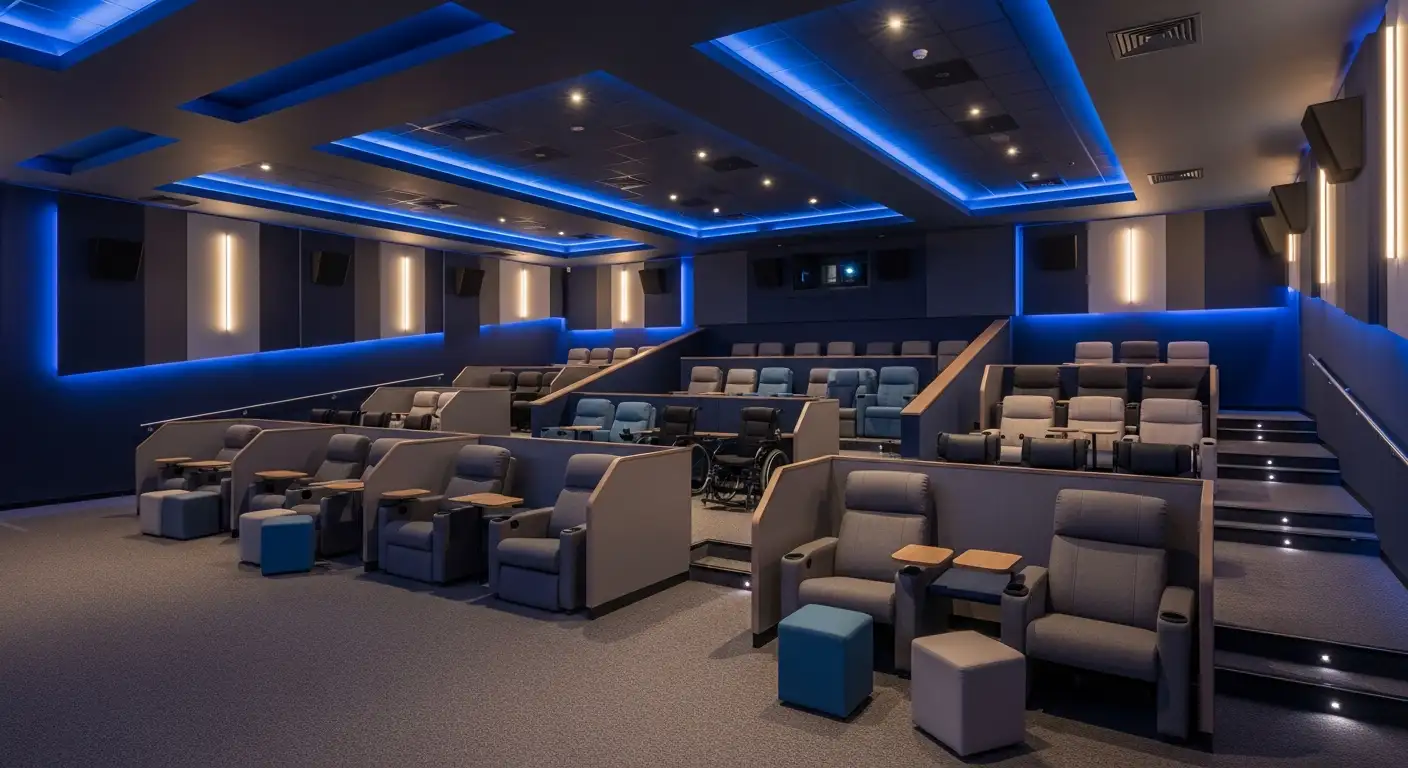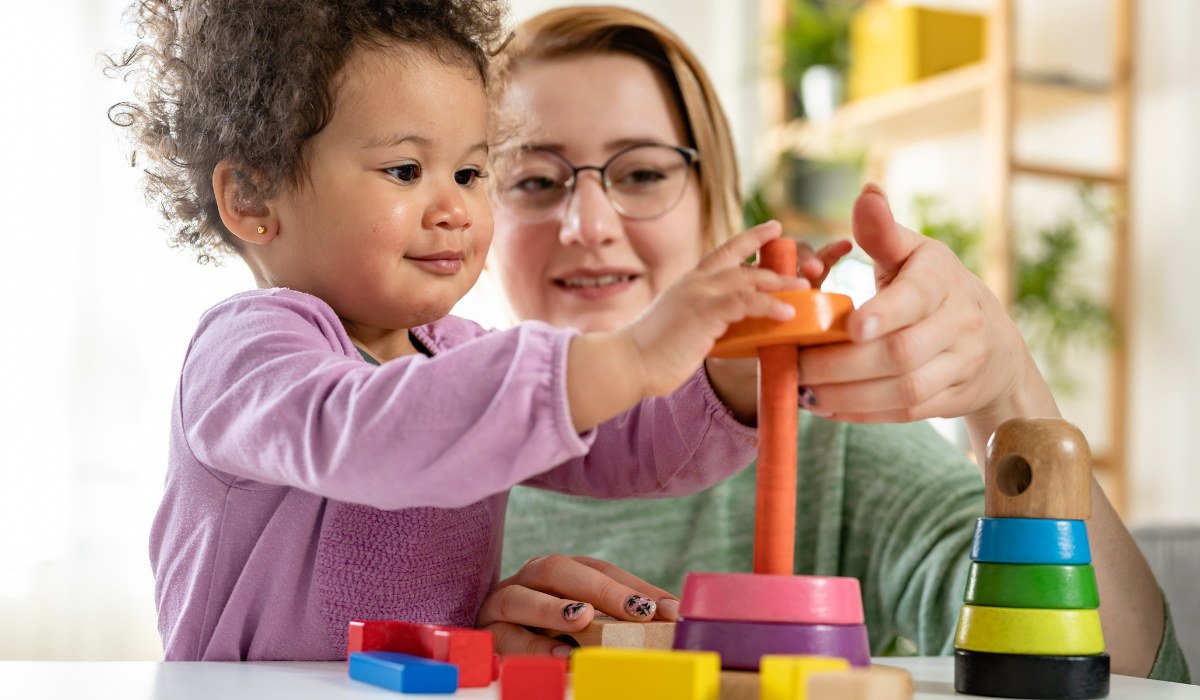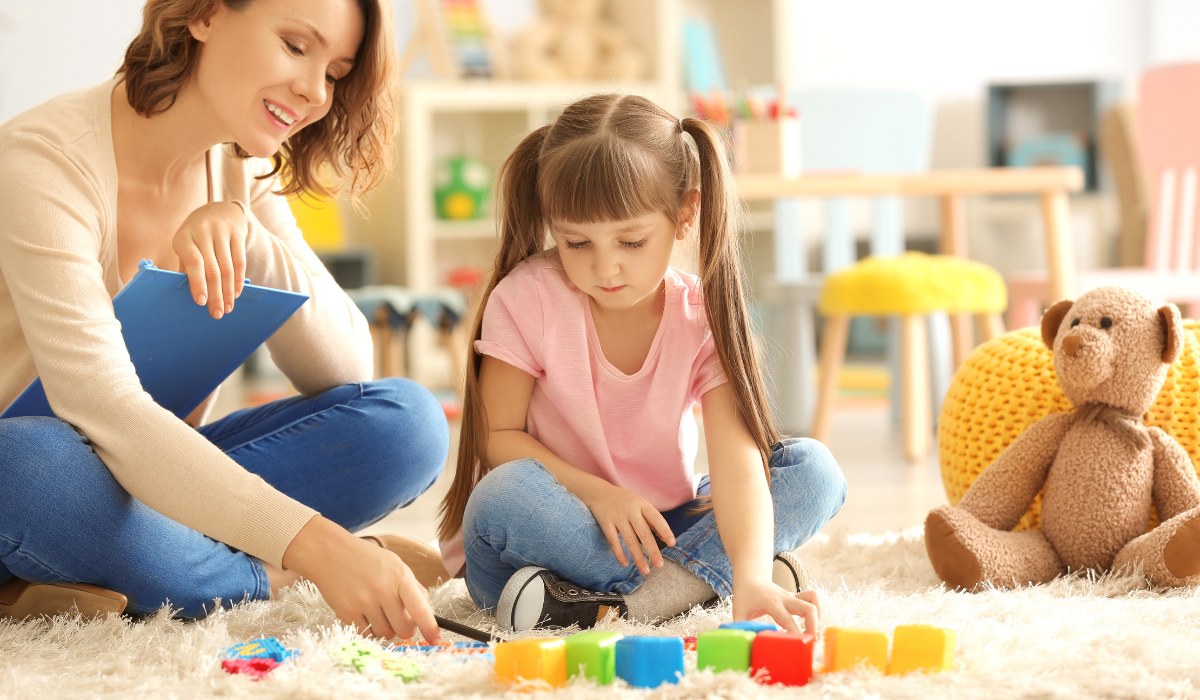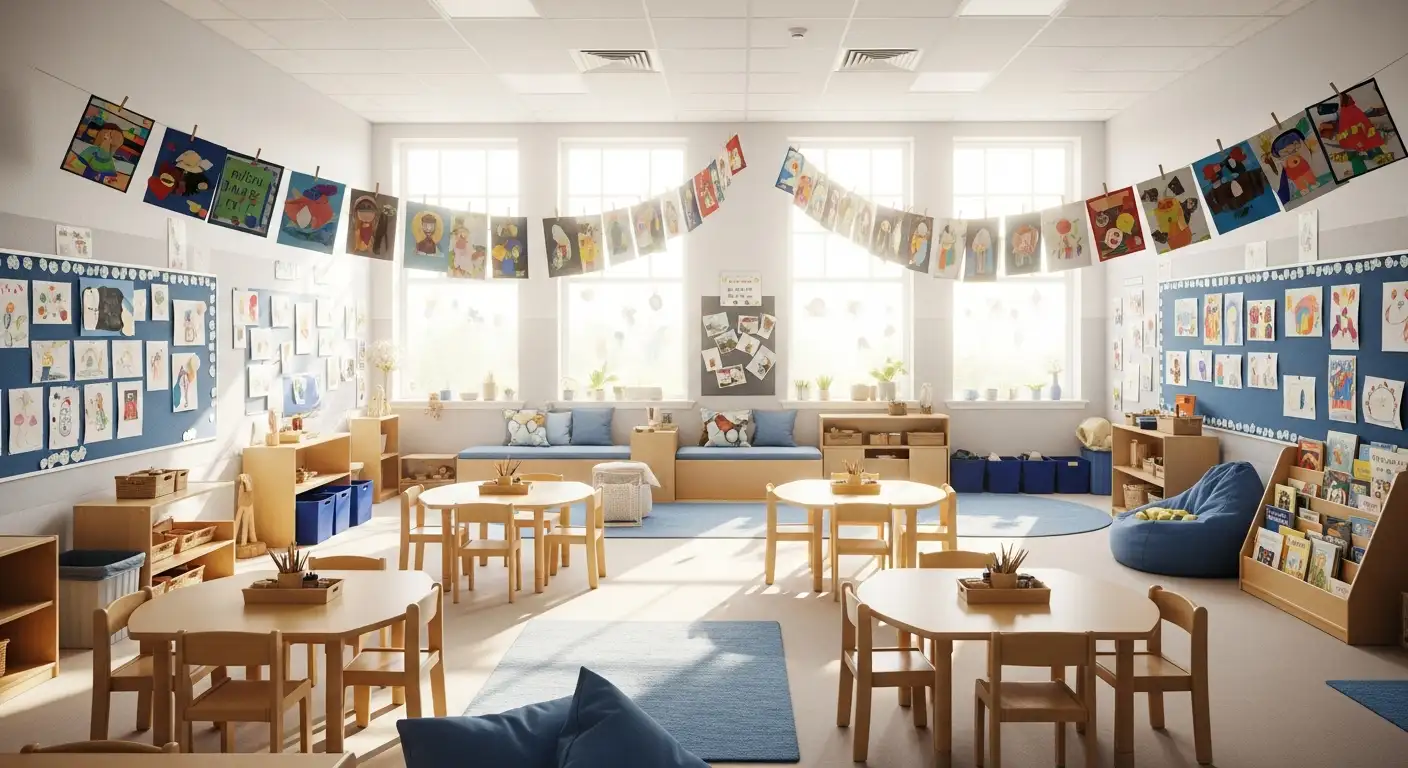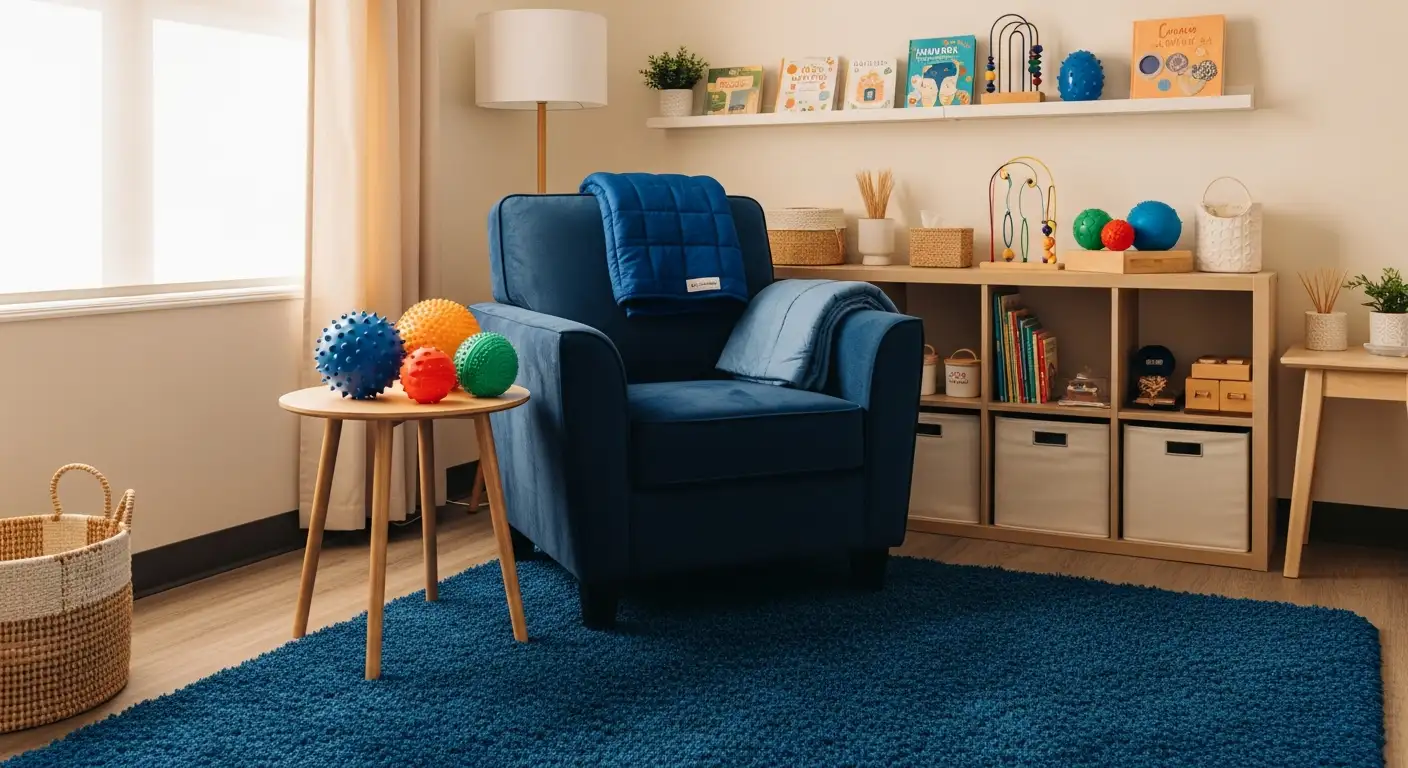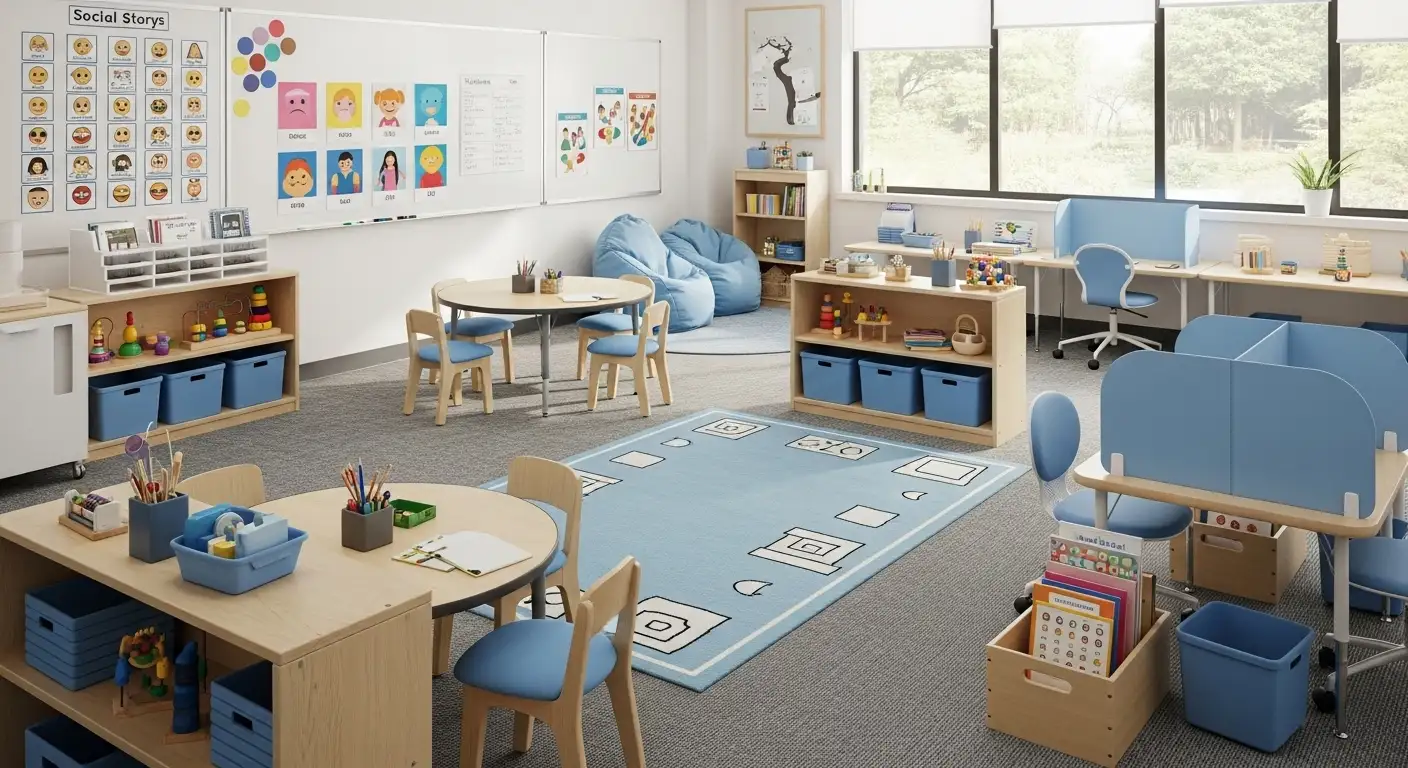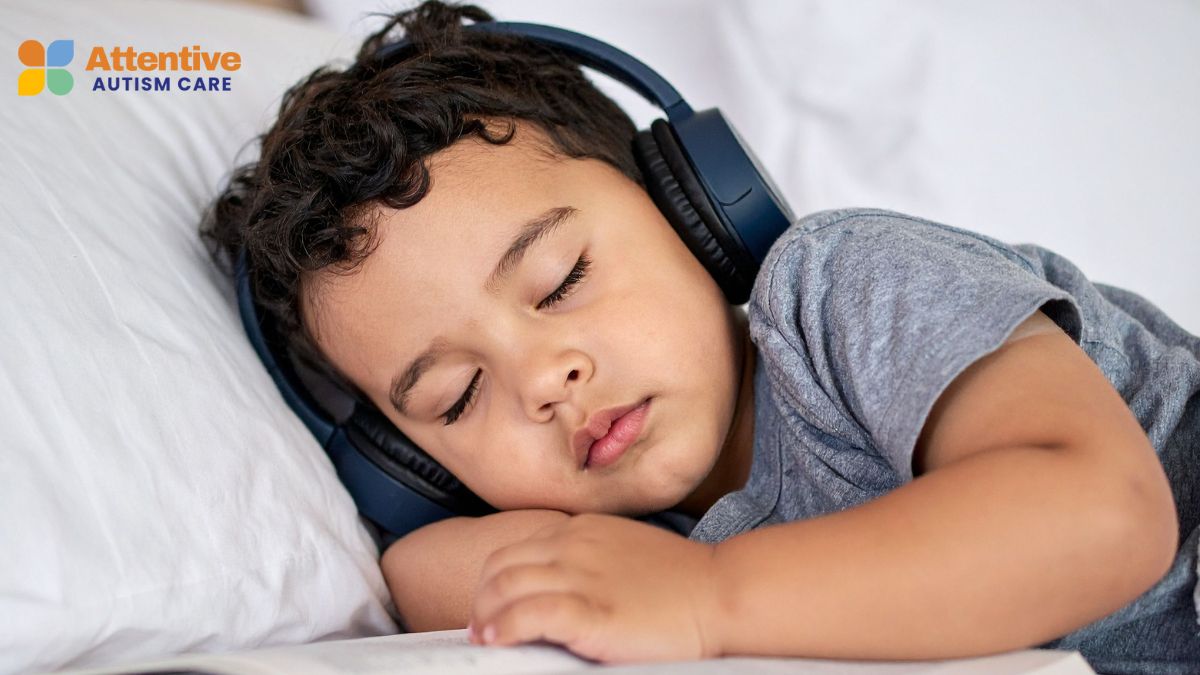Early Signs Of Autism In Babies And Kids
Spotting Autism Early: What Parents and Caregivers Need to Know

Understanding the Early Signs of Autism in Babies and Children
Detecting autism spectrum disorder (ASD) in its earliest stages can significantly improve developmental outcomes through timely intervention. Although autism presents uniquely in each child, certain early signs, especially within the first two years of life, can serve as important warning indicators for parents, caregivers, and healthcare professionals. This article explores the developmental milestones, observable behaviors, and key signs to watch for, along with guidelines on when to seek medical advice for screening and diagnosis.
Early Signs in Infancy (0-12 Months)
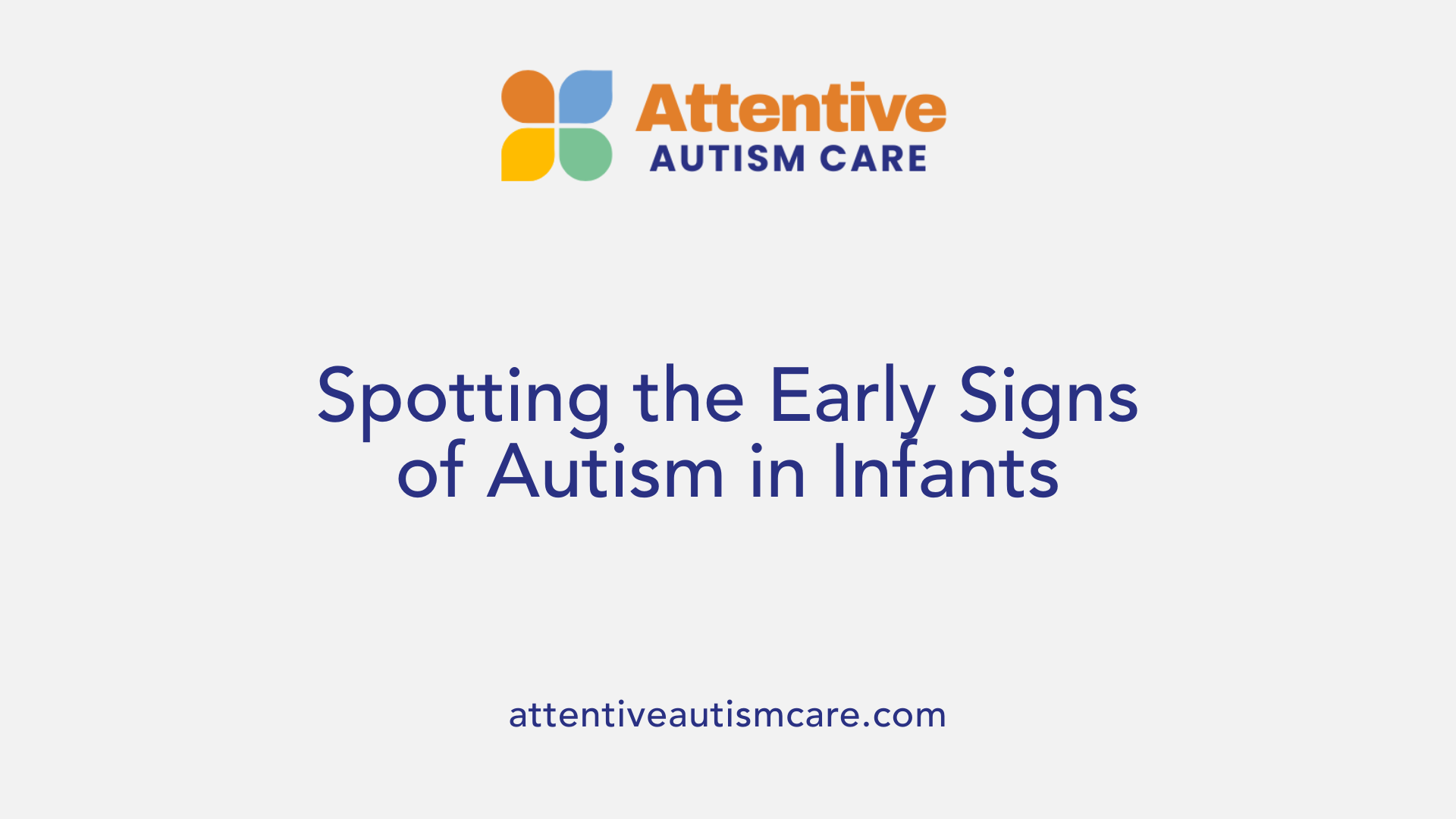
Limited eye contact and social responsiveness
In infants under 12 months, a notable early sign of autism can be reduced eye contact. Parents may notice their baby avoids looking directly into their eyes or does not seem to engage in reciprocal social interactions. For example, the infant might not respond to facial expressions or social cues like smiling or cooing.
Delayed or absent babbling and gestures
Many infants typically babble by around 6 months and begin using gestures such as pointing or waving by 12 months. However, babies displaying signs of autism may show delayed or absent babbling and rarely use gestures. They might not respond when called by their name, and they don’t demonstrate typical behaviors like reaching or pointing to share interest.
Unusual body movements and repetitive behaviors
Repetitive motions like hand-flapping, stiff body postures, or walking on toes can be early indicators. Such rhythmic movements are often performed in a consistent, stereotyped manner and may be observed during play or when the child is stressed.
Poor reaction to stimuli or sensory sensitivities
Autistic infants can display reduced responsiveness to sounds, sights, or touches. Some may be overly sensitive to loud noises or bright lights, appearing distressed or overwhelmed by sensory input. Conversely, others might seem underreactive, ignoring stimulation that would typically elicit a response.
When should I seek medical advice for autism screening?
Parents should consider consulting healthcare professionals if they notice their child shows signs such as not following moving objects with their eyes, limited or no facial expressions, or absence of social smiling by 6 months. If the baby does not turn to look when called by name by 9 months, or if there is little or no babbling by 12 months, it’s advisable to seek guidance.
Early screening tools like the M-CHAT-R are helpful in identifying children who might need further assessment. It’s recommended that children undergo developmental surveillance during routine checkups at 9, 18, and 24 months. Prompt evaluation and early intervention can lead to better developmental outcomes.
What are the early signs of autism in infants and toddlers?
In the first year, signs include reduced eye contact, limited emotional expressions, and poor response to social engagement. Toddlers between 12 and 24 months may not respond to their name, lack gestures such as pointing, and show restricted interests or repetitive behaviors. Some children may experience regression, losing language or social skills after initially developing them.
What is the biggest red flag for autism?
The most prominent warning sign is minimal or absent social interaction, such as avoiding eye contact and not responding to social cues. For example, not smiling at familiar faces or not pointing to share interest are serious indicators. When combined with language delays and repetitive behaviors, these signs warrant prompt professional assessment.
What is the main cause of autism?
Research suggests that genetics play a dominant role in autism's development, accounting for a large part of its origins. Multiple genes have been associated with ASD, and environmental factors during pregnancy, like advanced parental age or maternal health issues, may influence risk, but they are less understood and are considered contributory rather than primary causes.
What developmental milestones should parents watch for in children aged 12-24 months?
Between these ages, children typically say one or two words, follow simple instructions, point to objects, and engage in pretend play. They should also show interest in other children and initiate social interactions. Delays or lack of these milestones may indicate autism, especially if the child does not respond to name or gestures.
How do behavioral patterns differ in children with autism compared to typically developing children?
Autistic children often exhibit repetitive behaviors, insistence on routines, and focus on specific interests. They may play with toys differently, such as lining up objects or engaging in repetitive motions. They also tend to show less typical social reciprocity, avoid eye contact, and may be less responsive to social cues.
What are the common sensory sensitivities associated with autism?
Children with autism often have unique sensory responses. They might be upset by loud noises or bright lights, prefer certain textures or tastes, or seek intense sensory input like rubbing objects or smelling things. Such sensitivities can influence their behavior significantly.
What steps can parents take if they notice early signs of autism?
Parents should consult healthcare providers if they observe signs like not responding to their name, lack of gestures, or absence of social smiles by age 12-18 months. Routine developmental screening and tools such as the M-CHAT-R/F can identify at-risk children. Early intervention services—speech therapy, occupational therapy, behavioral strategies—are most effective when started early.
Early recognition and intervention enable children with autism to develop vital communication and social skills, improving overall quality of life and ease of support.
Developmental Milestones and Screenings
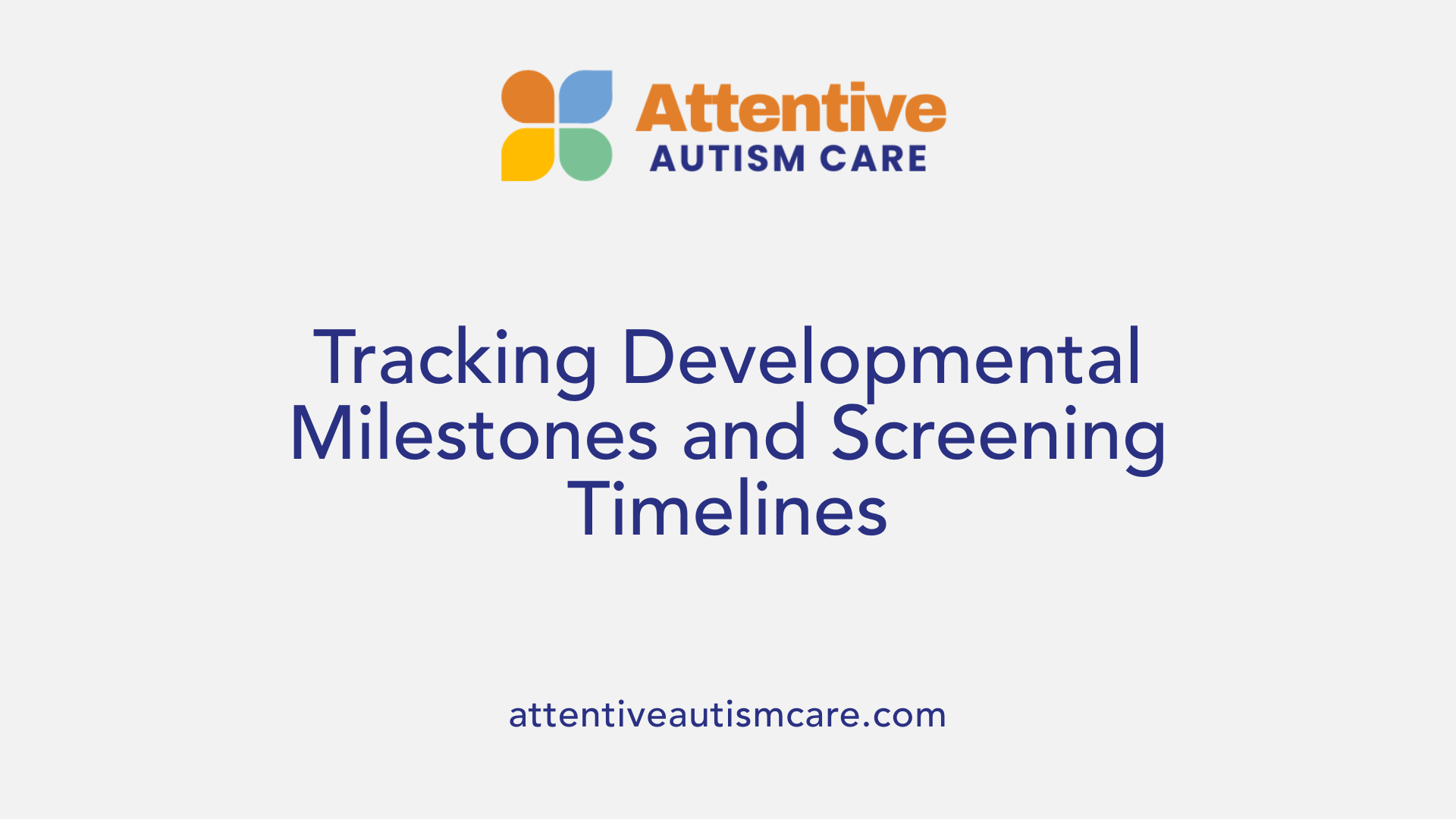
What are recommended guidelines for typical developmental milestones from birth to age 3?
Monitoring a child's growth involves paying close attention to developmental milestones, which serve as markers of typical growth in the first three years of life. In the earliest months, normal infants respond to social stimuli by smiling, making eye contact, and beginning to imitate simple sounds. By 6 months, babies usually respond to their name, babble, and show interest in interactive play.
Around 12 months, most children will wave goodbye, imitate actions, use a few words, and respond to simple questions or instructions. At age 24 months, children often combine two words into simple phrases, follow simple commands, and enjoy pretend play. By 36 months, most children can speak in multi-word sentences, understand complex instructions, play cooperatively with peers, and show increasing independence.
While these milestones are typical, variations are common. Some children develop skills earlier or later, and this usually does not indicate a problem. However, significant delays or absence of several milestones may suggest the need for further assessment.
What ages are recommended for autism screening?
Early screening for autism is crucial, especially during well-child visits at 18 and 24 months. These scheduled screenings aim to identify children who may be on the autism spectrum as early as possible. The American Academy of Pediatrics recommends autism screening at these ages because most signs tend to emerge during this time.
In addition to screening at these ages, ongoing developmental surveillance is advised. Pediatricians routinely observe a child's behavior and development during checkups, noting any concerns expressed by parents or caregivers.
How are screening tools like the M-CHAT-R/F used?
The Modified Checklist for Autism in Toddlers, Revised with Follow-Up (M-CHAT-R/F), is a widely used screening questionnaire designed for children between 16 and 30 months. It consists of simple yes/no questions that parents answer based on observed behaviors.
If the initial screening indicates potential concerns, follow-up questions help clarify the child's behaviors. A positive screening does not diagnose autism but highlights the need for a comprehensive evaluation by specialists.
Screening tools like the M-CHAT-R/F are quick, reliable, and non-invasive, making them ideal for early detection efforts.
Why is regular developmental surveillance important?
Routine developmental assessments go beyond screening tests, involving healthcare professionals observing, questioning, and examining a child's skills and behaviors over time.
Regular surveillance helps catch subtle signs that may not be apparent during brief checkups and ensures that children who fall behind on milestones receive timely follow-up. The CDC recommends developmental surveillance at every well-child visit, with more formal screening at specific ages.
Early identification through these practices enables prompt intervention, which can significantly improve communication, social skills, and overall development.
| Age Range | Typical Milestones | Screening Recommendations | Notable Signs to Watch For |
|---|---|---|---|
| 0-6 months | Responds to faces, smiles, makes eye contact | Routine checkups; observe social engagement | Limited smiling, poor facial recognition, no response to social stimuli |
| 6-9 months | Babbles, responds to name, shows interest | Surveillance; monitor parent concerns | No babbling, no gestures, lack of eye contact |
| 9-12 months | Starts pointing, waving, responding to joint attention | Screen at 18 and 24 months; ongoing surveillance | Not responding to name, limited gestures, no imitation |
| 12-18 months | Uses some words, imitates sounds, points | Formal screening at 18 months; surveillance | No words by 16 months, limited gestures, no social play |
| 18-24 months | Combines words, follows instructions | Screening at 18/24 months; tracking milestones | No two-word phrases, sensory sensitivities, regression |
| 24-36 months | Understands simple questions, uses sentences | Ongoing developmental checks | Limited speech, difficulty engaging with peers |
Why early screening and intervention matter
Detecting autism early allows children to benefit from targeted interventions like speech therapy, occupational therapy, and behavioral strategies. Such interventions can significantly improve communication, social skills, and adaptive behavior.
Parents are encouraged to maintain open communication with healthcare providers and report any concerns about their child's development. Early intervention is supported by research indicating better long-term outcomes.
If you observe signs such as limited eye contact, failure to respond to name, lack of gestures, or delayed speech, consult your child's doctor promptly. Remember, early assessment and support can make a meaningful difference in a child's developmental trajectory.
Observable Behaviors and Communication Challenges
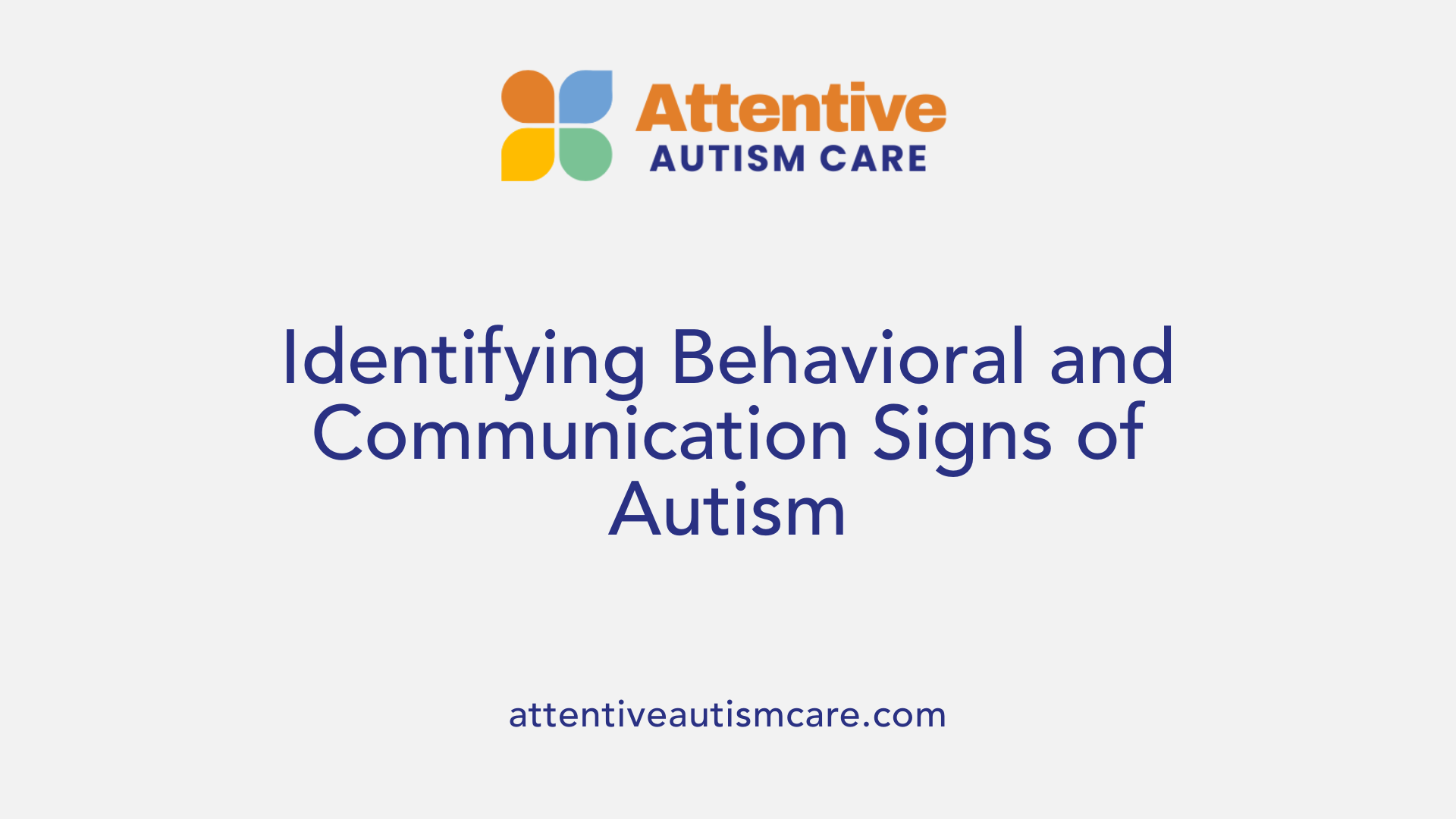
What are the early signs of autism in infants and toddlers?
Early detection of autism can be challenging but observing certain behaviors can be indicative. In infants and toddlers, signs such as limited eye contact or avoiding gaze are common, often noticed as early as 2 months. Babies might not respond to their name by 9 months and may show minimal social smiling or sharing of interest. Delayed babbling, reduced gestures like pointing or waving, and difficulty with nonverbal cues are crucial signs.
Some children experience regression—losing previously developed skills—that typically occurs between ages 12 and 24 months. This may involve a sudden or gradual loss of speech, social behaviors, or play skills.
Early identification, through awareness of these signs, allows for screening using tools like the M-CHAT-R and prompt intervention, significantly improving outcomes. Recognizing these early behaviors is essential since the window for effective support is most impactful during their formative years.
What cues indicate social communication difficulties in young children?
Children showing social communication challenges often do not respond to their name or make eye contact with caregivers. They might not share enjoyment or interest, such as pointing at objects to show curiosity or interest. Limited use of gestures like waving or nodding, and difficulty understanding or using simple social cues, are also observed.
Engagement in pretend play or sharing experiences with others is generally limited or absent. These behaviors reflect difficulty in social interaction and establishing reciprocal communication, which are hallmark features of autism.
Recognizing these cues early on helps healthcare professionals and parents identify children who might benefit from developmental assessments. Early support can enhance social skills and communication, leading to better social integration.
How does regression affect children on the autism spectrum?
Regression refers to the loss of skills previously acquired, such as speech, social interaction, or play behaviors. Approximately 25% of children later diagnosed with autism experience regression between ages 15 and 24 months.
This phenomenon can be subtle, with children seemingly developing normally before suddenly losing language abilities, eye contact, or social engagement. Regression is often distressing to parents as it marks a noticeable change in their child's development.
Early recognition of regression is critical because it warrants urgent professional evaluation. Targeted intervention programs can help children recover lost skills and support ongoing development.
| Age Range | Typical Signs | Regression Signs | Intervention Opportunities |
|---|---|---|---|
| 0-6 months | Poor eye contact, limited facial expressions | – | Routine screening recommended |
| 6-12 months | Not responding to name, limited gestures | Possible regression of early social skills | Early intervention benefits |
| 12-24 months | No speech, loss of Gestures | Language and social skills regression | Immediate assessment advised |
| 24+ months | Limited speech, difficulty with social interactions | Regression often evident | Early therapies crucial |
Understanding these patterns can facilitate earlier diagnosis and tailored support. Overall, observable behaviors related to speech, gestures, and social engagement are essential indicators in identifying autism spectrum disorder early in life.
The Role of Environment and Genetics in Autism
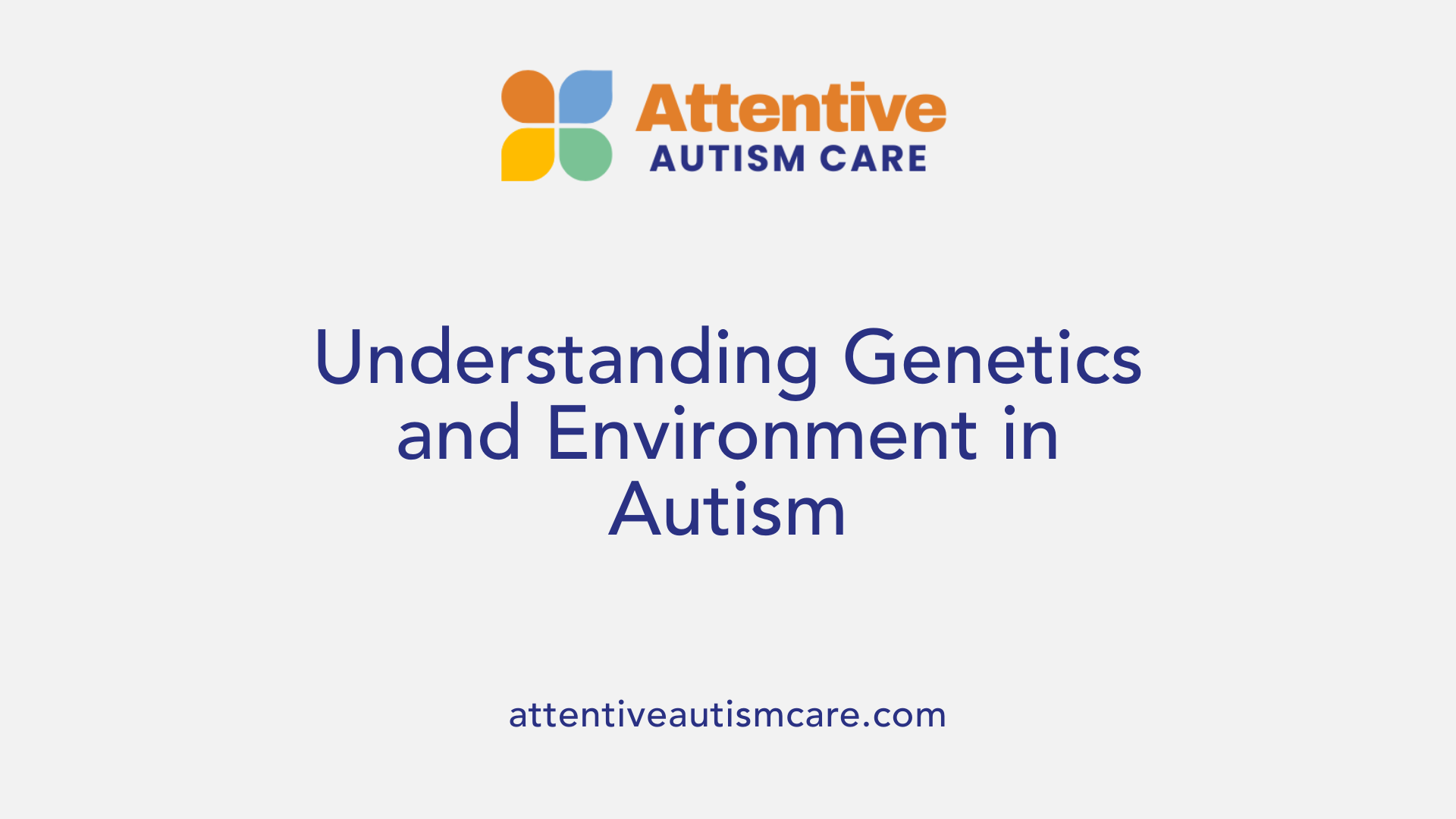
What is the main cause of autism?
Autism spectrum disorder (ASD) is understood as a neurodevelopmental condition primarily influenced by genetics. Studies suggest high heritability estimates, ranging from about 83% to over 90%, highlighting the significant role of genetic factors in autism's development.
Numerous genes have been linked to autism, including FMR1 and MECP2. These genes are involved in brain development and synaptic functioning. In addition to inherited gene variations, spontaneous genetic mutations, such as copy number variations (CNVs), can contribute to autism risk. These genetic differences can affect brain wiring and developmental pathways, leading to the characteristic features of ASD.
While genetics are the main factor, environmental influences during pregnancy also play a part. Factors like advanced parental age, maternal health issues such as infections or inflammation, exposure to toxins (like heavy metals or pollutants), and certain medications taken during pregnancy may increase the likelihood of autism. However, these are not considered primary causes but rather risk modifiers.
The complex interaction between genes and environment is crucial in understanding ASD. Epigenetic mechanisms, which involve changes in gene expression without altering the DNA sequence, may also influence neurodevelopment. For example, environmental exposures can affect how genes associated with brain development are expressed, potentially increasing autism susceptibility.
Collectively, autism results from a multifaceted interplay between genetic susceptibility and environmental influences. Its origins are not attributable to a single factor but instead involve a combination of inherited traits and environmental exposures that affect brain development.
Interaction between genes and environment
The relationship between genetics and environmental factors is dynamic. In some cases, certain genetic profiles may increase sensitivity to environmental influences, thereby elevating autism risk. For instance, a child with genetic susceptibilities might be more affected by prenatal infections or toxin exposure.
Research continues to explore how these interactions contribute to autism. Understanding this complex crosstalk aids in early identification, prevention, and development of targeted interventions.
| Aspect | Details | Additional Notes |
|---|---|---|
| Heritability | Ranges from 83% to over 90% | Indicates a strong genetic component in autism |
| Major Genes | FMR1, MECP2, PTEN, among others | Many genes involved, some linked to specific syndromes |
| Mutations | Copy number variations, de novo mutations | Account for a significant portion of cases |
| Environmental Factors | Parental age, maternal health, toxins, infections | May influence risk but are not sole causes |
| Epigenetics | Changes in gene expression due to environmental influences | Affect brain development and autism susceptibility |
| Interaction | Genes and environment synergize in affecting development | Critical for understanding individual risk and variability |
More information on causes of autism
For further research, search using the terms "genetics environmental factors autism causes" to find detailed scientific articles and reviews that delve into the multifactorial nature of autism, highlighting ongoing discoveries and evolving understandings.
Additional Behavioral and Sensory Signs
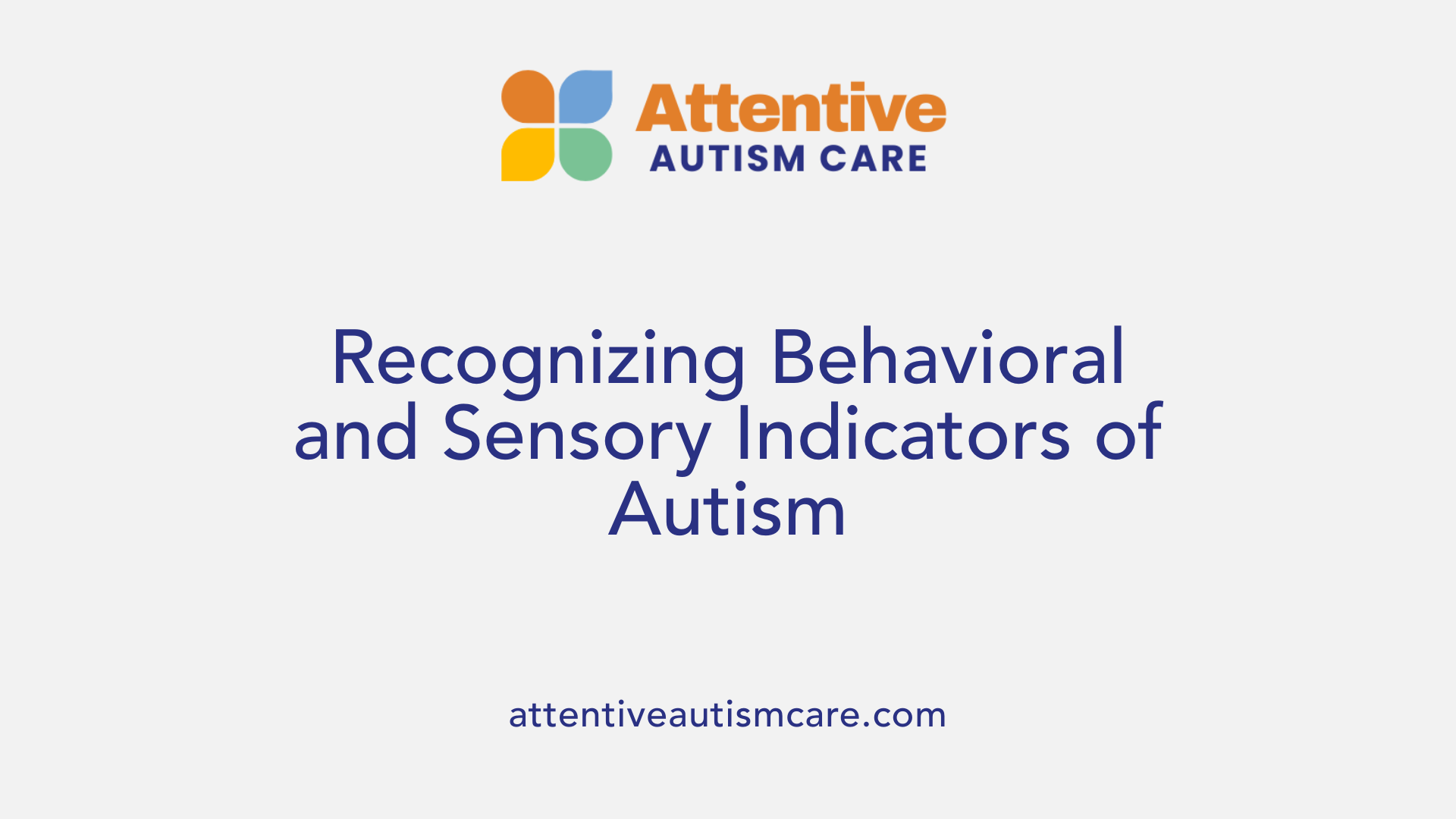
What are the common behavioral patterns in children with autism?
Children with autism often exhibit specific behavioral patterns that are noticeable early in development. Repetitive movements, such as hand-flapping, rocking, spinning, or lining up toys, are common behaviors. These actions serve as routines or calming activities and may be seen as a way to self-regulate in response to overwhelming sensory input.
Strong preferences for routines and resistance to change are typical. Many children may become distressed when routines are disrupted, showing a strong desire for sameness. They might insist on specific ways of doing things and become upset with minor changes.
Repetitive play, such as spinning wheels or lining up objects, is also characteristic. Instead of engaging in varied play, children might focus intensely on a particular interest, sometimes for hours.
Sensory sensitivities are another prominent aspect. Children may be either overresponsive or underresponsive to stimuli like sounds, textures, lights, or tastes. For instance, a child might cover their ears to loud noises or avoid certain textures in food or fabrics. Others might seek out sensory input by rubbing objects, smelling things repeatedly, or engaging in self-stimulatory behaviors.
These patterns are not just behaviors but are often ways children manage sensory overload or emotional distress. Recognizing these behaviors can be crucial for early diagnosis and intervention, helping caregivers and therapists develop personalized strategies to support the child's needs.
How do sensory sensitivities manifest in autistic children?
Sensory sensitivities can vary significantly among children with autism, manifesting as either hyperreactivity or hyporeactivity to sensory stimuli.
Hyperreactivity leads children to react intensely or become overwhelmed by common sensory experiences. For example, a child might cover their ears due to loud noises, avoid bright lights, or refuse to wear certain textures of clothing because they find them irritating or painful.
On the other hand, hyporeactivity results in diminished responses. Some children may not notice or respond to their name, fail to flinch at loud sounds, or appear indifferent to pain or temperature changes.
Seeking behaviors are also common, with children actively searching for sensory input. They might rub objects vigorously, smell or lick things excessively, or repeatedly flick light switches or tap surfaces.
Sensory sensitivities can significantly impact daily routines, learning, and social interactions. For example, an overly sensitive child may become upset during a visit to a busy store, leading to tantrums or withdrawal, while a hyposensitive child might seek dangerous stimuli without recognizing risk.
Understanding each child's unique sensory profile allows caregivers and professionals to adapt environments—such as reducing noise or providing calming activities—and incorporate sensory integration therapies that help improve regulation.
| Age Range | Common Signs | Sensory Response Examples | Intervention Suggestions |
|---|---|---|---|
| 0-6 months | Poor facial recognition, limited facial expressions | Overreacting to loud sounds, difficulty with textures | Gentle sensory exposure, comfort care |
| 6-12 months | Limited eye contact, not following gaze, limited babbling | Avoidance of bright lights, overreacting to touch | Sensory-friendly environments, tactile toys |
| 1-2 years | Fewer gestures, limited joint attention, no pointing | Insensitivity to pain, seeking sensory input | Sensory modulation strategies, behavioral support |
Additional notes
Recognizing these behavioral and sensory patterns can be vital for early intervention. While these signs are common in children with autism, they are not definitive on their own. Careful observation and consultation with healthcare professionals are essential for a proper diagnosis. Early identification allows for tailored therapies that can improve communication, social skills, and overall development.
Therapies such as speech therapy, occupational therapy, and behavioral interventions aim to address these behaviors and sensory issues. Creating supportive, sensory-friendly environments at home and school also helps children manage their sensitivities more effectively.
Understanding the spectrum of behaviors and sensory responses in autism helps caregivers and educators create compassionate, effective support systems. Continuous observation and professional assessment are the cornerstones of fostering developmental progress for children on the spectrum.
This comprehensive overview of behavioral and sensory signs highlights the importance of early recognition and tailored intervention, fostering better developmental outcomes for children with autism spectrum disorder.
The Importance of Awareness and Action
Early recognition of autism's signs enables prompt intervention, which can greatly enhance a child's developmental trajectory. While not all early behaviors indicate autism, being vigilant about developmental milestones and behavioral cues allows parents and caregivers to seek professional assessments timely. Regular developmental checks, parental education, and reliance on screening tools like the M-CHAT-R/F support early detection efforts. Remember, early diagnosis and tailored therapies can foster better communication, social skills, and adaptive behaviors, helping children with autism reach their full potential. If you observe any early signs, consult a healthcare professional without delay—your proactive approach makes a critical difference.
References
- Signs of Autism in Babies and Toddlers
- Signs of autism | Autism Speaks
- 3 Early Signs of Autism Spectrum Disorder (ASD)
- Early Signs of Autism - UCSD Neurosciences
- Autism Spectrum Disorder (ASD) Symptoms & Causes
- [PDF] Early Warning Signs of Autism Spectrum Disorder - CDC
- Early Signs of Autism in Babies and Newborns - Parents
- Recognizing the Signs of Autism in Babies - Healthline
- Autism spectrum disorder - Symptoms and causes - Mayo Clinic









